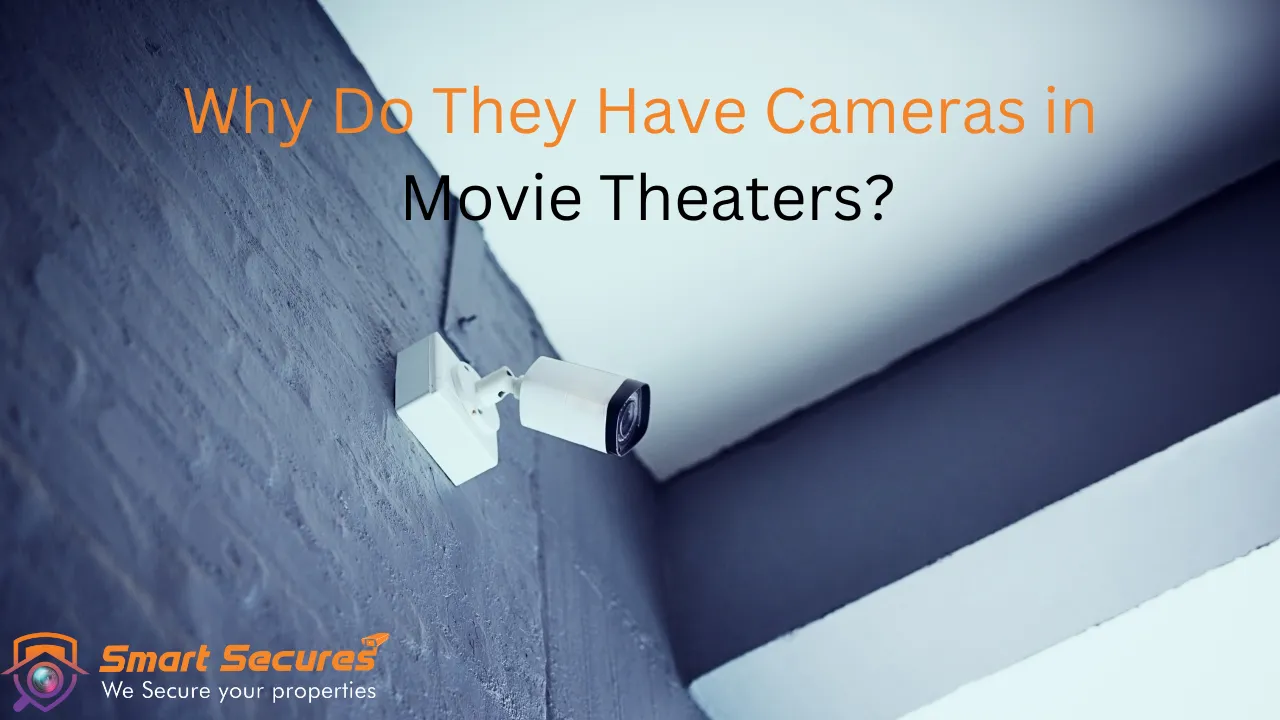Home > Blog > Do Movie Theaters Have Cameras? Everything You Need to Know
Have you ever wondered if movie theaters have cameras? You might be surprised to learn that many theatres do have surveillance systems in place.

Have you ever wondered if movie theaters have cameras? You might be surprised to learn that many theaters do have surveillance systems in place. Whether for security reasons or to maintain order during screenings, movie theater cameras serve multiple purposes. But just how common are these cameras? Are they hidden, or can you spot them yourself? Let’s dive into this topic and explore why movie theaters use cameras and what to expect next time you're watching a film.
Movie theaters are prime locations for surveillance. A variety of reasons explain why they choose to install cameras in and around their venues:
There are different types of CCTV cameras typically used in movie theaters to achieve various surveillance goals. Here’s a breakdown:
These are commonly used because of their discreet nature. They’re mounted on the ceiling and often cover wide areas, making them ideal for monitoring seating areas without drawing attention.
Bullet CCTV cameras, which are easily visible and act as a deterrent, are typically placed at entrances, exits, and hallways. These cameras are very effective at capturing detailed images of individuals as they enter and exit the theatre.
PTZ CCTV cameras are more advanced and offer the ability to pan, tilt, and zoom. These cameras can be adjusted remotely to focus on specific areas when necessary, providing more control over surveillance.
Some theaters might use hidden cameras in less conspicuous spots. These cameras are usually installed to monitor areas that need extra surveillance without being noticed.
In a movie theater, surveillance cameras are strategically placed to ensure maximum coverage. Here’s where you’ll typically find them:
Cameras are usually placed at the front and back entrances of the theater to monitor who enters and exits the building. These cameras also help track ticket sales and check for any suspicious activity.
The lobby and concession areas, where moviegoers purchase snacks and tickets, are high-traffic locations. Cameras in these areas help monitor customer activity and protect against theft.
Cameras are installed in hallways to ensure patrons are behaving properly and to prevent any potential conflicts or safety hazards.
In larger theaters, cameras may be mounted in the aisles or corners to ensure that audience members are not using their phones or engaging in disruptive behavior.
For added security, many theaters install cameras in their parking lots to keep an eye on vehicles and prevent car break-ins or theft.
Movie theater surveillance footage is usually monitored in real time by security personnel. However, some systems automatically record footage for future reference. Here's how it works:
In some larger movie theaters, there may be a dedicated security room or control center where security staff can monitor live feeds from the cameras. This ensures that any suspicious activity can be addressed immediately.
Many movie theaters opt for cloud-based surveillance systems. This allows them to store footage remotely, making it easier to access and review past footage if necessary.
Some theaters are now integrating AI into their surveillance systems. AI can help detect suspicious activity such as crowd gatherings, fights, or abandoned bags, alerting security staff automatically.
It’s important to note that while most surveillance cameras in theaters capture video footage, they typically do not record audio. This is because recording audio in public spaces without consent may violate privacy laws. However, there may be certain areas, such as the concession stands, where audio could be recorded for specific purposes.
Most theaters do not prominently advertise their use of surveillance cameras, but they do often include disclaimers in their terms and conditions or on their websites. In some cases, you might see a sign near the entrance or inside the theater that states that video surveillance is in operation.
The amount of time movie theaters retain surveillance footage varies based on the theater’s policy and the storage system used. Typically, footage is stored for anywhere from 30 to 90 days. After this period, the data may be overwritten, unless it’s needed for evidence in an ongoing investigation.
While movie theaters have surveillance cameras, they are not always monitored in real-time. Smaller theaters might only check footage if there is an incident. In larger theaters or chain cinemas, surveillance may be actively monitored by staff. It’s also worth noting that in some cases, surveillance may be set to record only when motion is detected.
In addition to CCTV cameras, movie theaters employ other security measures to ensure safety. These might include:
Surveillance cameras play a critical role in ensuring the safety and security of movie theaters. From preventing theft to monitoring audience behavior, cameras serve as an essential tool in maintaining a safe and enjoyable movie-watching experience. So, the next time you head to the theater, know that the cameras are there to protect you and your fellow moviegoers.
Yes, most movie theatres have surveillance cameras installed to ensure safety, monitor crowds, and deter criminal activities.
Typically, movie theatre cameras do not record audio due to privacy laws and regulations.a
Movie theatres usually store footage for 30 to 90 days, depending on their policies and storage systems.
Some cameras are visible, but many are discreetly installed to blend into the surroundings.
Surveillance footage can help investigate incidents, providing evidence to authorities if necessary.

5,852 reviews